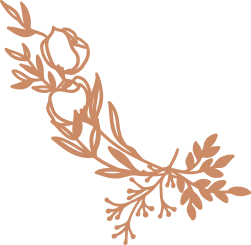Why you should invest in sustainable clothing (and how to find it)
When it comes to what to wear this fall, I have good news and I have bad news. Want the bad first?
Okay. The average American throws out 82 pounds of textiles each year.
Yikes.
Don't worry, it gets worse.
Apparel production currently consumes a volume of water equivalent to 32 million Olympic swimming pools
Cotton requires 2,700 liters of water just to make one cotton shirt—the equivalent to what one person drinks in two and a half years
Approximately 7,000 liters of water are needed to produce one pair of jeans—5-6 years worth of water for a person
80 billion pieces of clothing are consumed globally every year
Compared to 16 years ago, today's consumers on average buy 60% more clothing and only keep it for half as long
Producers at the bottom of the supply chain of the fashion industry are some of the lowest paid workers in the world, and roughly 85% of them are women
Polyester production for textiles released about 706 billion kg. of greenhouse gases in 2015, the equivalent of the annual emissions from 185 coal-fired power plants
The good news is, there's something we can do about it (and quickly). Buying better-made, sustainable clothing has a direct impact on the planet and its people. Nisolo alone boasts some pretty lovely impact numbers.
117 full-time, sustainable jobs created
The average Nisolo producer earns 33% above fair trade wages
100% of the producers’ children are attending school
100% of the producers’ children attending university in Peru will be first generation graduates
Thanks to an in-house financial literacy training program 100% of Nisolo producers now have a bank account. Two years ago that figure was 10%
All producers and their dependents have free access to company-paid healthcare
So, what do you invest in?
While I would argue that you should really consider the wearability everything that goes into your closet, let's talk anchor pieces. These are the long-lasting pieces to which you can tether your whole wardrobe.
What are anchor pieces?
They're classic. Think timeless, flattering shapes. An anchor piece, by definition, can never be a trend—like bell sleeves or Ikat print. Classics include shapes like peplum tops, A-line skirts, belted trench coats, Chelsea boots, cashmere V-necks. They aren't a flash in the pan, they're here for the long haul.
They easily transition from season to season. While you won't find many pieces that you can literally wear all year long, staple pieces transition well. These Nisolo Chelsea boots will for sure take me through fall and winter and well into spring.
They're generally high use. Shoes are a great example. I have literally worn these boots two and three times a week since I got them. You might know that I like to judge things by Cost Per Wear(CPW). If I buy a pair of $30 boots that fall apart after three wears, that’s a cost of $10 per wear. But if I invest in a pair of $200 boots that I wear twenty times a year for five years, my CPW is $2. Other examples include coats, purses and uniform-wash jeans (pleeeeease, I beg you, don't skimp when it comes to denim).
You can wear them multiple ways. Look for versatility. With these boots as an example, I've already worn them to a wedding, to a concert, to the grocery and to meetings. Or you can also look for pieces that you can literally wear multiple ways, like Vetta Capsule's pieces.
They're squarely in your color palette. For example, I'm an autumn. Autumns have one navy in our palette, so I could technically purchase an anchor piece in that color, but I have lots and lots of shades of warm browns. That's why the winter jacket I bought this year is camel and not dark blue. Make sense?
If you want to start investing in your own anchor pieces, check out this list of more than 55+ apparel companies I believe in.
